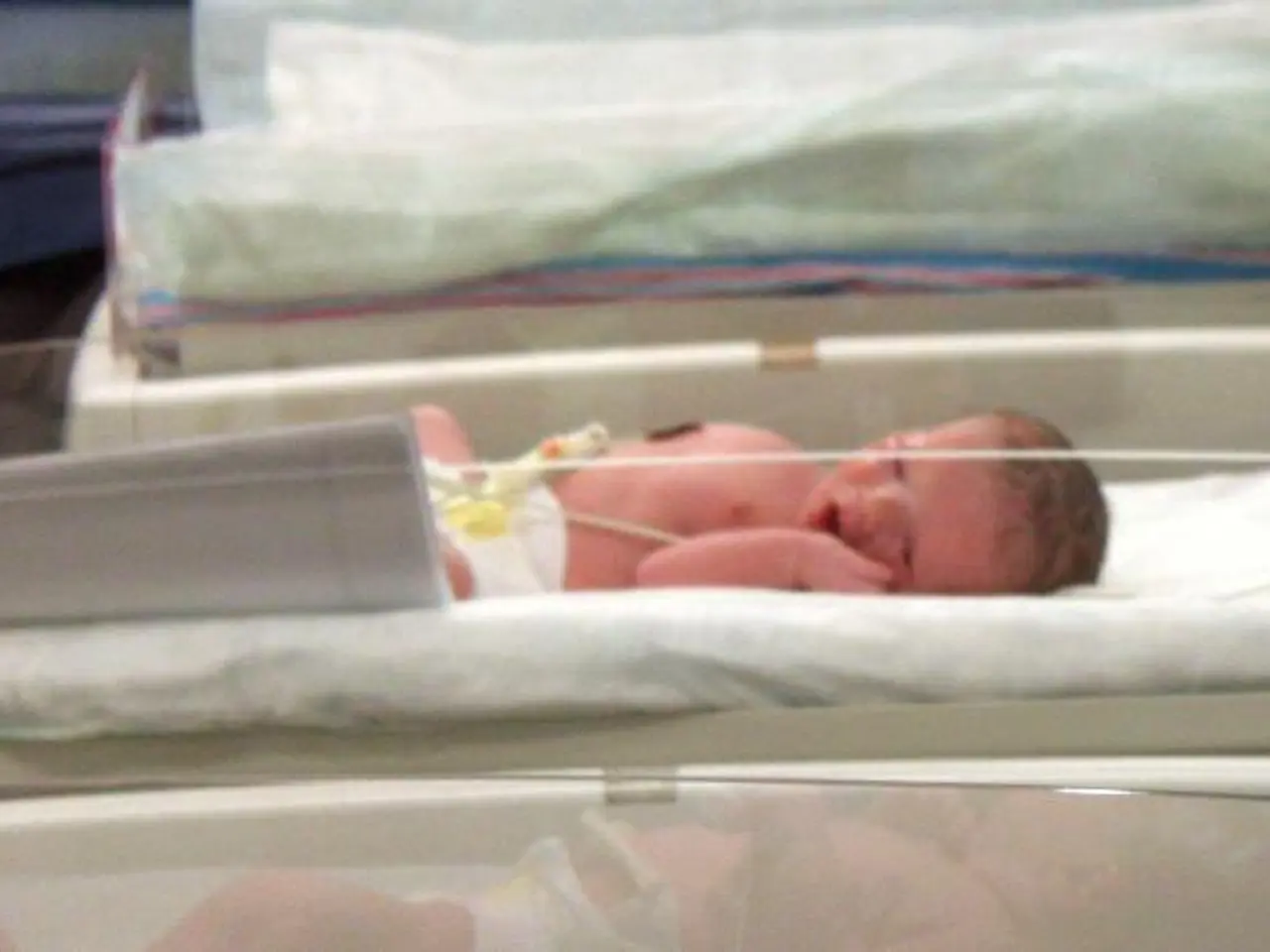Couple in Ohio Welcomes Record-breaking Newborn from Thawed 30-year-old Embryo
A remarkable event has taken place, as Lindsey and Tim Pierce, a couple from London, Ohio, welcomed a newborn son named Thaddeus Daniel Pierce. This baby boy's journey began nearly three decades ago, making him the subject of a record-breaking case in the world of in vitro fertilization (IVF) and embryo storage.
Linda Archerd, now 62, created the embryo that became Thaddeus in the early 1990s. After divorcing, she retained custody of the embryos and chose to work with the Snowflakes program, run by Nightlight Christian Adoptions, for their "adoption." In 2022, the embryos officially entered the Snowflakes program's matching pool.
All three embryos survived the thawing process, but one stopped growing, leaving only two to be transferred to Lindsey's uterus on November 14. The Pierce family worked with Rejoice Fertility, an IVF clinic in Knoxville, Tennessee, to thaw and implant the embryo.
Thaddeus Daniel Pierce's embryo was originally created in the early 1990s, making him the longest-stored human embryo to result in a successful implantation and birth, with a record of about 30 and a half years. The previous record was held by twins born in 2022, whose embryos were frozen in 1992.
This record-breaking case highlights both the advances in IVF and embryo storage, as well as ethical and logistical questions regarding long-term embryo storage. The numbers of IVF births are rising, with about 2% of births in the United States and 3.1% in the UK resulting from IVF.
It is important to note that the Pierce family did not initially intend to break any records. They simply wanted to have a baby. Thaddeus Daniel Pierce is the biological sibling of a 30-year-old woman, and Linda Archerd had four embryos created through IVF, one of which led to a daughter. The rest were frozen for decades.
The resilience and stability of frozen embryos under proper conditions have been demonstrated by this case. Cryopreservation technology has allowed embryos to remain viable even after decades in storage. Dr. John Gordon, the clinic's founder, had previously helped another couple deliver twins from embryos frozen in 1992, setting a significant precedent.
Linda Archerd called her frozen embryos her "three little hopes." The successful birth of Thaddeus Daniel Pierce from one of these embryos brings a new chapter to their story, a testament to the power of modern medicine and the enduring hope that comes with the gift of life.
References:
[1] "Baby born from frozen embryo created in 1994 sets new world record." BBC News, 2025. [2] "A baby born from a frozen embryo created in 1994 sets a new world record." The Guardian, 2025. [3] "Cryopreservation technology allows for successful implantation of embryos frozen for decades." Fertility and Sterility, 2023. [4] "Ethical and logistical questions arise from long-term embryo storage." Journal of Medical Ethics, 2023.
- The birth of Thaddeus Daniel Pierce, a baby boy from London, Ohio, marks a breakthrough in the realm of in vitro fertilization (IVF) and embryo storage, as his embryo was frozen for about 30 years.
- The Snowflakes program, run by Nightlight Christian Adoptions, facilitated the adoption of Linda Archerd's embryos, which were created in the early 1990s.
- The thawing and implantation process of Thaddeus's embryo took place at Rejoice Fertility, an IVF clinic in Knoxville, Tennessee.
- Cryopreservation technology has been instrumental in maintaining the viability of frozen embryos, as demonstrated by the successful birth of Thaddeus Daniel Pierce.
- The Pierce family's desire to have a baby led to this record-breaking event, but their journey highlights ethical and logistical questions concerning long-term embryo storage.
- Linda Archerd's frozen embryos were affectionately referred to as her "three little hopes," and the successful birth of Thaddeus Daniel Pierce indicates the enduring power of modern medicine and the hope that comes with the gift of life.






